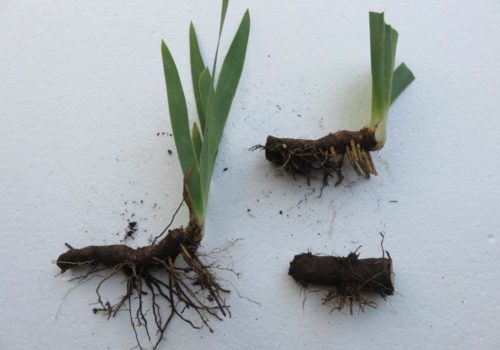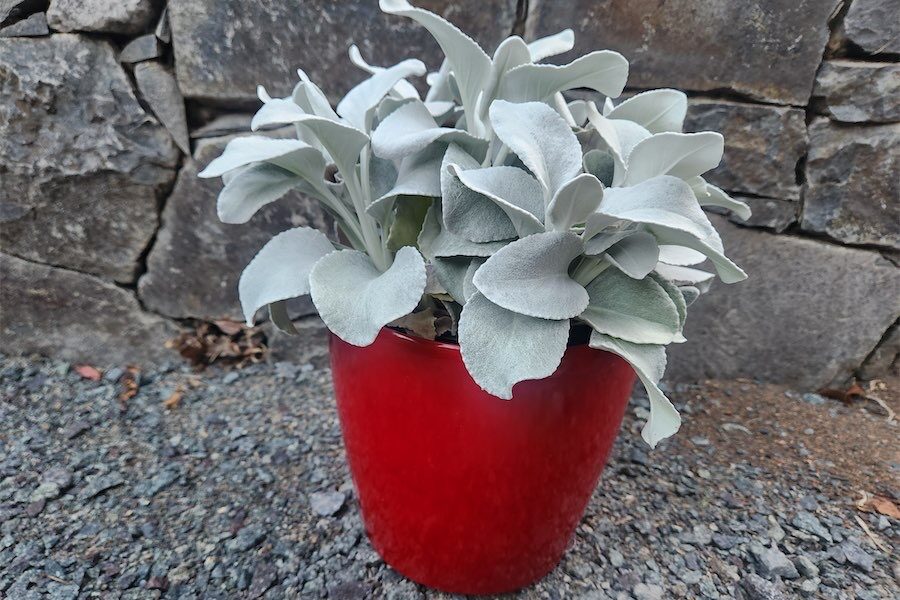Gardening writer CEDRIC BRYANT answers readers’ queries, from rose-pruning to potato-planting, and how to divide tall bearded iris in this gardening Q&A.
THIS week I’ll start by answering a few reader queries that have been piling up.

Q: “Most of my roses still have their leaves, can I prune them?”
A: Not a problem. This year has been a relatively mild winter with fairly regular rain, and many deciduous shrubs have retained a proportion of leaves. Based on advice from the Royal Horticultural Society, roses can be pruned at any time. On the other hand, if it doesn’t get done this winter, fret not, do it next year. They will flower just the same. The exception is the rose aficionados who only grow roses to win prizes at flower shows. Although they will be disappointed this year, with most shows cancelled.
Q: “Can I plant potatoes now?”
A: The quick answer is yes, but generally it’s better to delay until the weather warms, say late September/October.
Q: “I’ve found a bag of bulbs in the shed; I think they’re daffodils. They’re solid, looking in good condition. Can I still plant them?”
A: Why not? It’s better to plant them than risk rats or mice eating them. Plant them to the same depth as the bulb is thick, and water in with liquid seaweed plant food to encourage root growth.
Q: “I really enjoyed our display of pink Nerine bowdenii last autumn, although it’s always a race from when they come into flower and the first early frosts. Firstly, when can I dig them up to divide and secondly, when is the best time to plant new bulbs?”
A: The answer to both questions is in early summer. It can be deceiving as not all outlets selling bulbs and seeds put them out for sale according to the season, so check with trained staff at the local garden centre.

Q: “I have some big clumps of tall bearded iris that have been getting ever larger year by year. Can I divide them now, and are there any rules on this?”
Bearded iris can grow into quite a formidable clump, which at the same time reduces the number of flowers. It can be quite a challenge to split them up and some people are concerned about damaging the rhizome. Don’t stress; these are as tough as rhinos. Once out of the ground, even large rhizomes can be broken into pieces, and providing they have roots, they’re ready for immediate planting. Trim off long scraggly roots as illustrated here and vitally important, do not bury the whole rhizome; leave it exposed to be baked by the sun. These are native to Spain and Portugal and simply love getting sunburnt! Plant north/south with the leaves facing south.

There are exceptions to the spring/summer flowering iris, such as Iris Unguicularis or winter flowering iris. These have thin, strappy leaves which should be cut to ground level in late summer to allow the sun to promote the winter flowers, exactly the same as hellebores. Incidentally, hellebores are great for an indoor floral display. Change the water regularly and as a cut flower they’ll last for a couple of weeks or more.
Lilies are the perfect companion plant for tall bearded iris, flowering from early spring to summer. While bearded iris just love the sun, lilies are more fragile and subject to strong winds. So a partially shaded spot, perhaps on the easterly side of the home, may be preferable.
Who can be trusted?
In a world of spin and confusion, there’s never been a more important time to support independent journalism in Canberra.
If you trust our work online and want to enforce the power of independent voices, I invite you to make a small contribution.
Every dollar of support is invested back into our journalism to help keep citynews.com.au strong and free.
Thank you,
Ian Meikle, editor




Leave a Reply